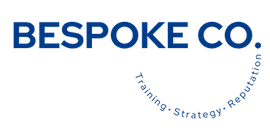Are you a good listener



“The more that you read, the more things you will know. The more that you learn, the more places you’ll go.”
― Dr. Seuss
When I interviewed successful entrepreneurs, CEOs, and small business owners for my two books: “Well Said: How to be heard in Business and Generate Real Influence” and “Well Spun: Big PR and Social Media Ideas for Small Business,” I discovered that one characteristic they had in common, and something they attributed to success is this:
They know they don’t know everything. And that’s why these individuals work to build diverse teams and surround themselves with experts in areas where they don’t have the right skills, knowledge, and expertise.
Improve your communication skills
That’s certainly the mark of a good leader. And while good leaders are confident and capable and typically good communicators, it’s always worthwhile remembering that we can, as individuals, continuously improve.
This is especially true of communicating – not just with our teams but also with our clients, prospective clients, and the wider community.
It is particularly true of communication right now. Digital media has exploded, and the media landscape is changing rapidly. While it’s true that many of the traditional media presentation strategies and skills remain the same, the big difference is two-fold.
Firstly: Speed. Everything in the media space is faster and more immediate than ever.
Secondly: Reach. You can ‘go global’ at the touch of a button.
So, are you prepared?
Learn media skills, or take a ‘refresher’ course
Whether you want to refresh your knowledge to up-skill for the new landscape or whether you’ve never done media training before, we have the perfect media training course for you.
It is comprehensive and convenient – AND you can train online, including two sessions of face-to-face time with me – at a time that suits you. The flexibility of the sessions means you’ll be able to fit them into your schedule when you have the appropriate time to focus, learn, and get the most out of them.
In the online media training, we cover a range of topics, including:
Identifying story angles and recognising threats and opportunities
How journalists work – questions to ask about what they want for their story
Creating a “quotable quote” that says what you need to succinctly and memorably
Techniques to control the ‘narrative’ and to help you feel confident under any circumstances
Strategies for different types of media.
We also delve into some technical practicalities which will help ensure that you invest in the right equipment to set you up for success, enabling you to do media interviews from your office, home, or wherever you are. The media won’t wait – so you need to be available – and nothing kills your media opportunity faster than technical failures.
If technology does fail, we’ll give you some tips for making the most of the situation – with a short text statement, for example. I believe that my extensive years working in media makes our training different – I can give you the benefit of first-hand experience.
Tips and tools for every media possibility
With the news cycle working so quickly, many advantages exist for companies looking to build their brand and connect with a broader audience. Some days are still slow news days, even when there are deadlines to meet, and these offer fantastic opportunities if you have a story ready to go!
The disadvantage of the fast news cycle is that you can get caught if the news affects your industry or your business, and you are not adequately prepared when the journalist comes knocking at your door.
We’ll help you prepare for a crisis, or a surprise phone call, sell your story and maximise any media opportunity.
Many people believe that getting “in the news” comes down to sheer “good luck” and “timing.” This is not true. Journalists will always be interested in stories that are interesting, unusual, and relevant …. And if journalists can be sure, they can rely on a confident spokesperson with good information.
Key takeaways
We know that you’ll get great value from our online media training – we’ll give you plenty of practice scenarios that you can walk away from the sessions armed with all the tools you need, as well as an excellent understanding of what’s required from you when you’re in the spotlight. We’ll also help you put together essential strategy documents to have a plan at your fingertips for when the time comes.
What’s more, everything you learn will benefit how you present your company when you generate your own social media posts, resulting in more exposure and engagement.
You can read more here. Or contact us with any questions or to make time for your media training.
In the meantime, don’t forget to follow us on Instagram, Twitter, and LinkedIn.

Newspapers are not dead. That said, they have certainly had to reshape their business model to survive over the past decade. But we’re living in a digitally obsessed world where news is shared on many platforms and not only from traditional media outlets. So, let’s talk about how to make the most of the modern media landscape.
Newspapers were once the undisputed main source of news, and the cornerstone of authority for everything from fashion styles to business and economics.
But those days have passed and newspapers have paid the price through lost subscriptions and fewer clicks – most people get their news online, and not just from newspapers. All mainstream media have embraced digital channels, and social media too.
The good news is that because we can all access and create news through our own channels, there are now numerous ways you can reach your audience without traditional media. The downside is that it can be harder to grab attention and hold it because there is so much more content out there – on websites, blogs, and social media platforms such as LinkedIn.
That’s why, when you are embarking on a media or communications strategy, you need to brush up your skills – across all areas.
You need to be able to articulate your messages quickly, give a good quote, and present well via radio and audio-visual mediums. In a digital world, it’s important to be relevant and it’s even more important to be clear and concise.
People don’t read as much as they used to – we see that rise of “snack journalism” with smaller news pieces we can read and understand in a few moments An 800-word blog (like this one) is good for your website, and you might even be successful in getting an op-ed piece in your industry publication, or the opportunity to provide a guest column in a newspaper or a business group newsletter, but in any space that’s not an off-shoot of a traditional print medium, then getting your message out will require good editing skills and some innovation.
Think 100 words max and get creative when it comes to how you package up your message and deliver it.
You also need to decide where you’re delivering it – you’ve got lots of choices, but a message can fall flat if you don’t embrace the style of the medium you’re using.
TikTok is not the same as LinkedIn – sure, that’s obvious. But it also means that you can’t just produce one piece of content and share it in several places. I’ve said this before too – delivering a podcast is also very different from fronting a video.
Video content formats are becoming increasingly popular as we become time-poor. Podcasts are easy to listen to in the car, while you’re doing the grocery shopping, at the gym, or cooking dinner. You can watch a video from the sidelines of soccer training, or while you’re waiting for a train, a plane … from the backseat of an Uber. You get the idea.
With this in mind, then at some point down the track, you’re going to have to get comfortable presenting in front of a camera.
During the pandemic lockdowns, endless Zoom calls gave us all a bit of training …. But slick digital content requires more than just fronting up with a great outfit and hair and makeup done.
You need to stand out, in terms of content and creativity, if you want views and shares in respectable numbers.
Presenting to video is not all that dissimilar to presenting to a live audience. The golden rule to successful presenting is to remember that your presentation is not about you. It’s about your audience.
The big difference, of course, is that on the video you’re close up and only you are in focus so you want to make the most of your facial expressions, body language, and vocal pace and tone. There is an ‘element’ of acting involved, for you to come across as confident, competent, and credible.
If you’re producing in-house then you will get several rehearsals and re-dos, but …. And I recommend this to all my clients – you really do want to hone your skills so that you can be a ‘one-take-wonder’ …
The reason for this is that as you build your own and your business’s online profile, then you’ll attract the attention of journalists and other kinds of content creators. When you collaborate with other professionals, live TV is a great example, you won’t always get a second go.
My experience as a seasoned speaker and former TV reporter has given me a great deal of insight into what makes a GREAT presenter … and how to teach simple tips and tricks to business owners and CEOs like yourself who want to get ‘camera-ready.’
Being comfortable in front of a camera or an audience is a must-have skill these days – it’s part and parcel of the way we do business and connect with customers and clients.
The pandemic may be over, but Zoom has become a vital tool for doing business. Think you’ll never be called to do anything more than host a meeting on camera? Think again.
Traditional face-to-face meetings such as sales presentations, meetings with boards and shareholders, and pitches to potential new clients or vendors, or funders are being replaced with AV technology. It’s cheaper and usually more effective for businesses to use these platforms than flying people to places for a two-hour meeting.
At Bespoke Communications we provide both one-to-one training and all forms of presentation skills training for teams. Contact us to find out more.

Business leaders can understandably feel totally flummoxed by constant changes that are impacting the way we do business, socialise and work online. Despite the rise of tech and the ability to hold events or speaking engagements virtually, the same tried and tested communication fundamentals still apply. Now there are just many more options available to get your message to market!
The best communicators are flexible, sincere, and not afraid to share their journey honestly – good, bad, or otherwise. Authenticity is key though that word can get overused, it still has currency in 2022. Another thing you should understand (if you don’t already) is that selling is no longer the name of the game. ‘Engagement’ is what you’re going for…. Genuine interaction with clients and customers builds loyalty.
Where you decide to share your message comes down to what you’re trying to achieve – stay flexible, there is a myriad of options to choose from in this rapidly changing landscape but the right one depends on the audience first and foremost.
The key is to know where your clients or customers are and to tailor your message accordingly… and here’s where you can really get creative!
In the past decade, we’ve seen an explosion in communication channels, platforms, and forums – there are new music and podcast streaming services, magazine apps, Insta, WhatsApp, and TikTok– the list is endless. But don’t be tempted to engage with them all at one time. Choose wisely, think innovatively, and allocate your budget and resources where you’re likely to get the most engagement. The ROI if you like.
While marketers have traditionally relied on one clever image or tagline, now is the time to explore ways to grow your brand’s imagery and message as you reach different niches via different forums. The trick though is to keep it consistent, but different – and that’s where professional advice can really make the difference between a campaign that works, and one that has real cut-through.
Sometimes I like to think of it as “Don’t skywrite to a fish – it can’t read. Tailoring the message to the audience and the platform is key. Audio-only simply doesn’t work on YouTube … you know what I mean?
With all of that in mind, here are my top 5 considerations for your next campaign.
On a final note, if you outsource, and the brief is right, trust that your creative team or content developers have worked hard to craft an engaging, authentic message that reflects what you offer and why it matters today. Just remember that the ‘hustle’ is important – never let your message hide from the audience. Get OUT there – blog, speak, comment, engage … the more you communicate, the more easily and simply you will secure new business opportunities… Keep it genuine. The days of the hard sell are over. The conversation is what counts.